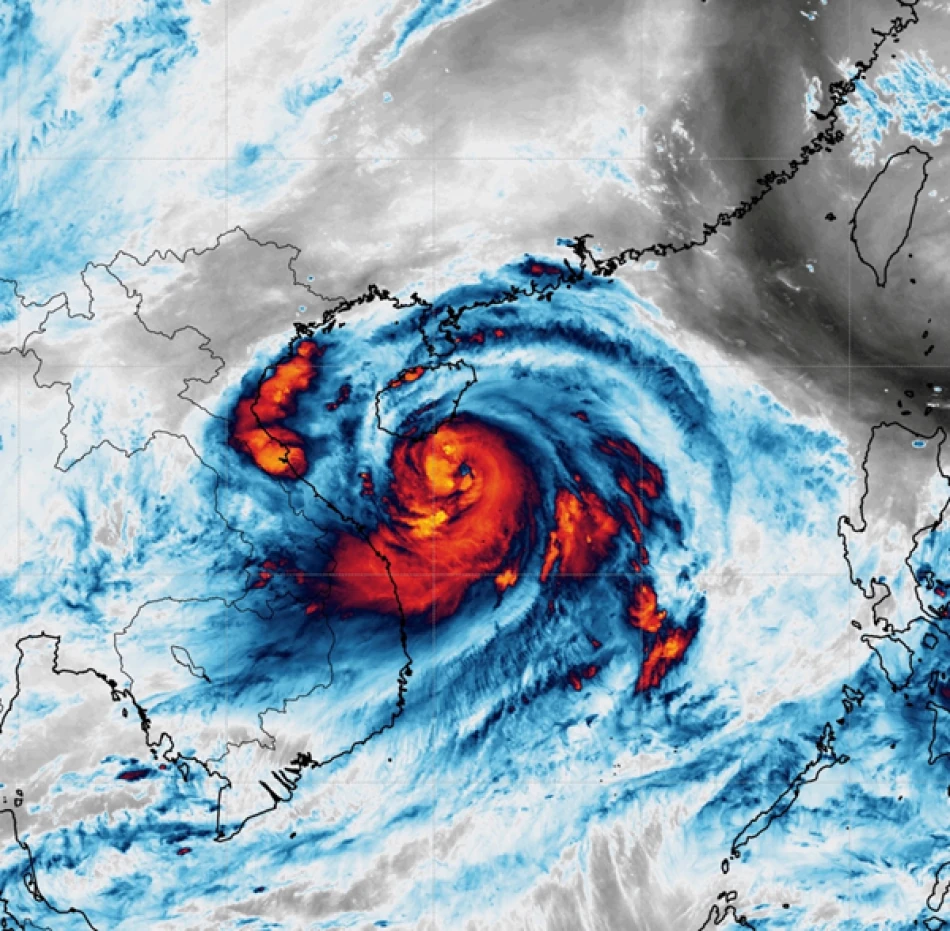
Sanya, China's Tourism Hotspot, Shuts Down as Powerful Typhoon Kaji Strikes
Typhoon Kajiki Forces China's Premier Resort City Into Complete Shutdown
Sanya, China's tropical tourism jewel that welcomed 34 million visitors in 2024, has ground to a complete halt as Typhoon Kajiki barrels toward Hainan Province with intensifying winds of up to 173 kilometers per hour. The city issued its highest-level red alert Sunday, shuttering all tourist attractions, suspending public transport, and ordering ships to cease operations as officials prepare for "worst-case scenarios."
Storm's Immediate Threat and Trajectory
As of 9:00 AM local time Sunday, Kajiki was positioned approximately 200 kilometers southeast of Sanya, packing winds of 137 kilometers per hour near its center. The National Meteorological Center warns the typhoon is gaining strength as it moves northwest at roughly 20 kilometers per hour, with maximum wind speeds potentially reaching 173 kilometers per hour.
The storm is expected to make landfall along Hainan's southern coast between Sunday afternoon and evening, or potentially skirt the coastline before heading west toward Vietnam. Weather experts predict heavy rainfall and powerful winds will also impact neighboring Guangdong Province and the Guangzhou region.
Economic Implications for China's Tourism Hub
The complete shutdown of Sanya represents a significant economic blow to one of China's most valuable tourism assets. The city's status as the "Hawaii of China" makes it a crucial revenue generator, particularly during peak travel seasons. With all shopping centers, restaurants, retail stores, and construction activities suspended indefinitely, the financial impact could extend well beyond the storm's immediate passage.
The tourism industry has become increasingly vital to Hainan's economy, especially as China promotes the island as a duty-free shopping destination to compete with regional hubs like Singapore and Hong Kong. Any prolonged disruption could affect China's broader strategy to boost domestic tourism and reduce outbound travel spending.
Comprehensive Emergency Response
Sanya's authorities have implemented the most stringent level of emergency response, with city officials holding crisis meetings to coordinate preparations. The red alert—the highest in China's color-coded warning system—triggered automatic protocols including:
Complete infrastructure shutdown: All schools, construction sites, and public transportation have ceased operations. Tourist attractions that typically draw millions of visitors annually have closed their doors.
Maritime restrictions: All vessels in Sanya waters have been ordered to suspend operations, a critical measure given the city's significant port activities and fishing industry.
Indefinite timeline: Authorities have made clear that lifting these restrictions depends entirely on the storm's actual impact, suggesting preparations for potentially extended disruptions.
Regional Vulnerability and Climate Patterns
Hainan Province's exposure to Pacific typhoons makes it particularly vulnerable during the traditional storm season. The island's geography—surrounded by warm ocean waters that fuel tropical cyclones—creates conditions similar to those faced by other island destinations like the Philippines and Taiwan.
China's investment in early warning systems and comprehensive emergency protocols reflects lessons learned from previous devastating storms. The emphasis on preventing casualties, as stressed by local officials who demanded "extreme caution to ensure no deaths and minimize injuries," demonstrates the government's prioritization of human safety over economic considerations.
The storm's potential path toward Vietnam also highlights the cross-border nature of these weather events, requiring regional coordination and potentially affecting broader Southeast Asian supply chains and tourism networks that have become increasingly interconnected in recent years.
Most Viewed News

 Layla Al Mansoori
Layla Al Mansoori






